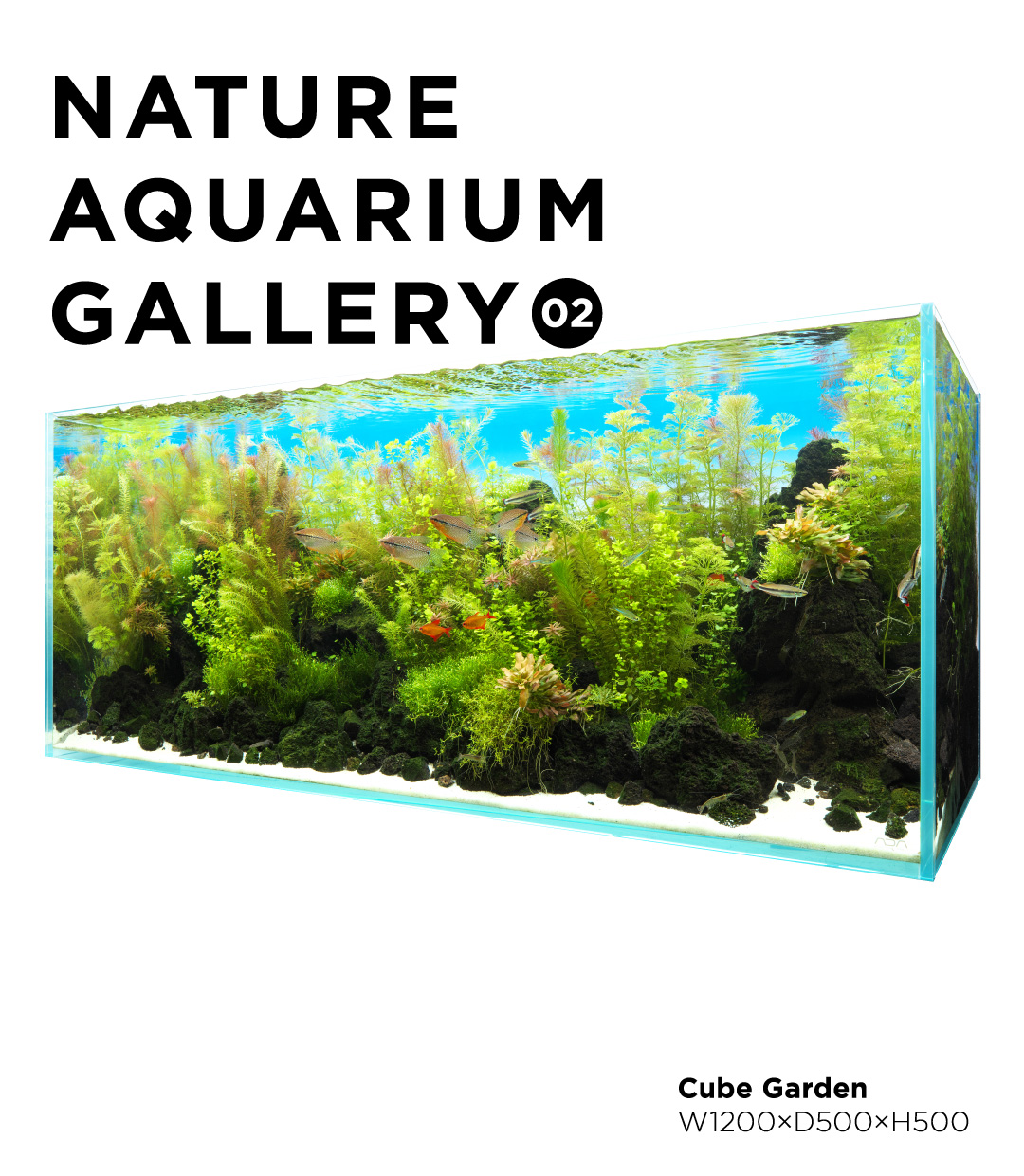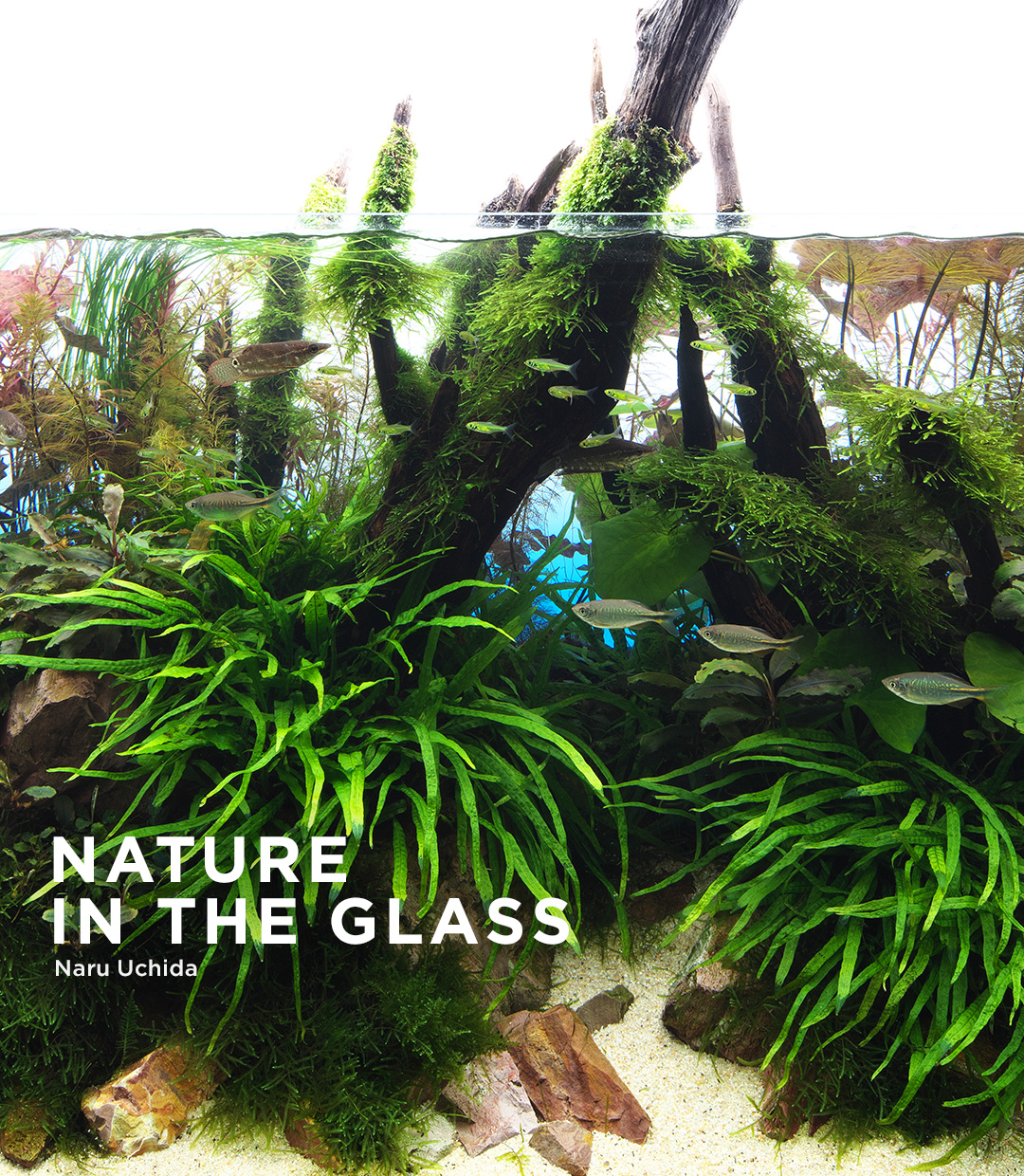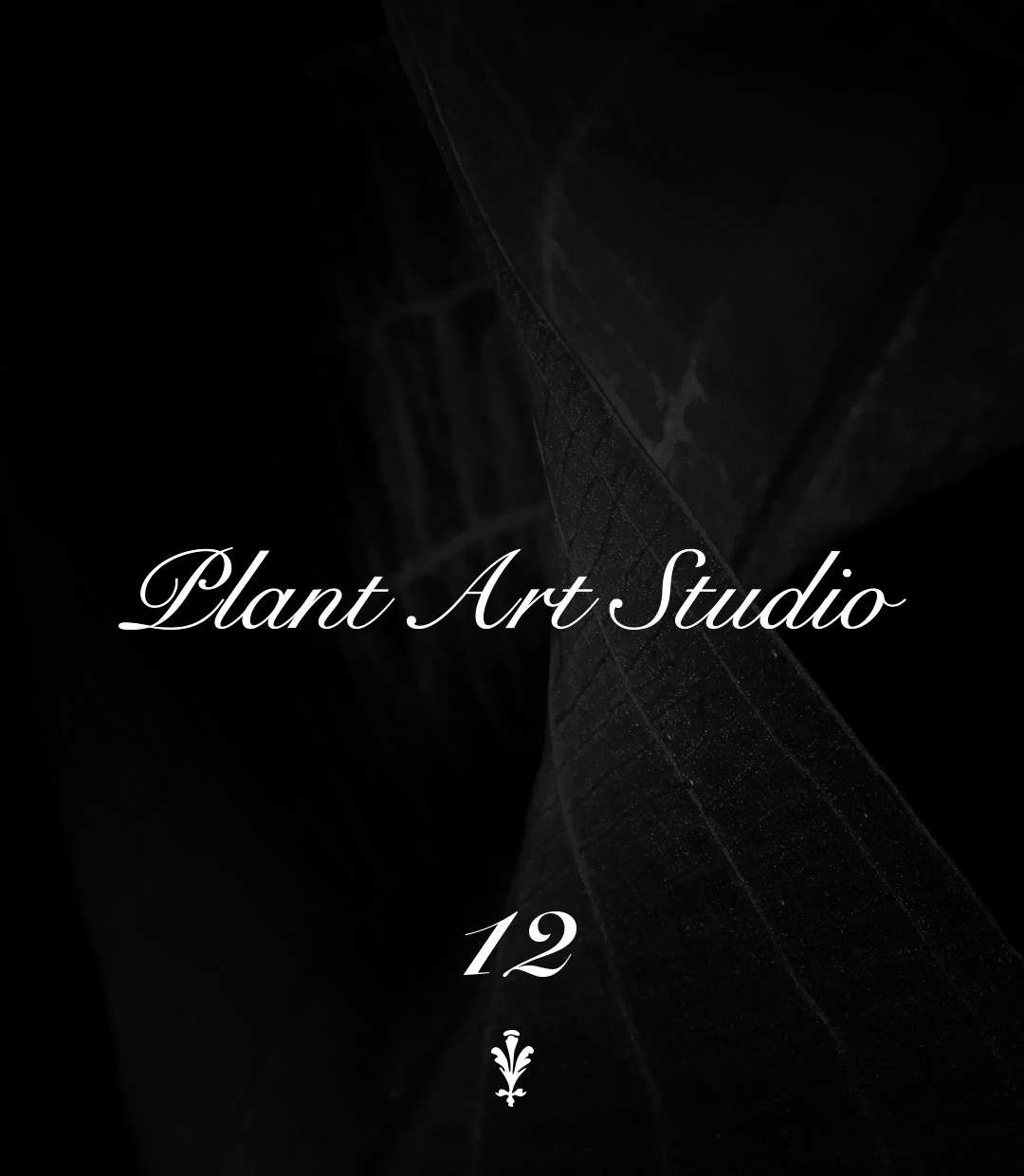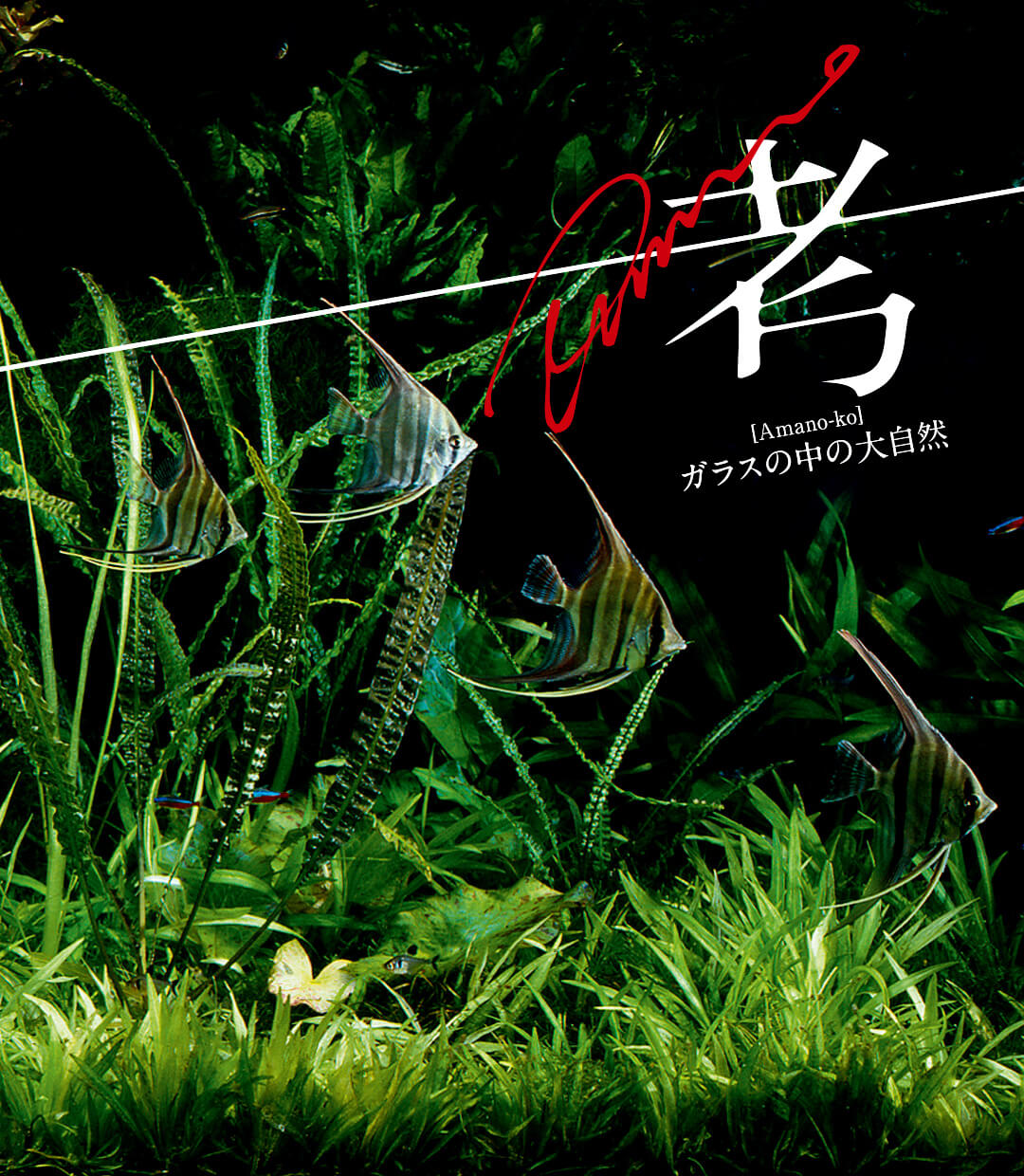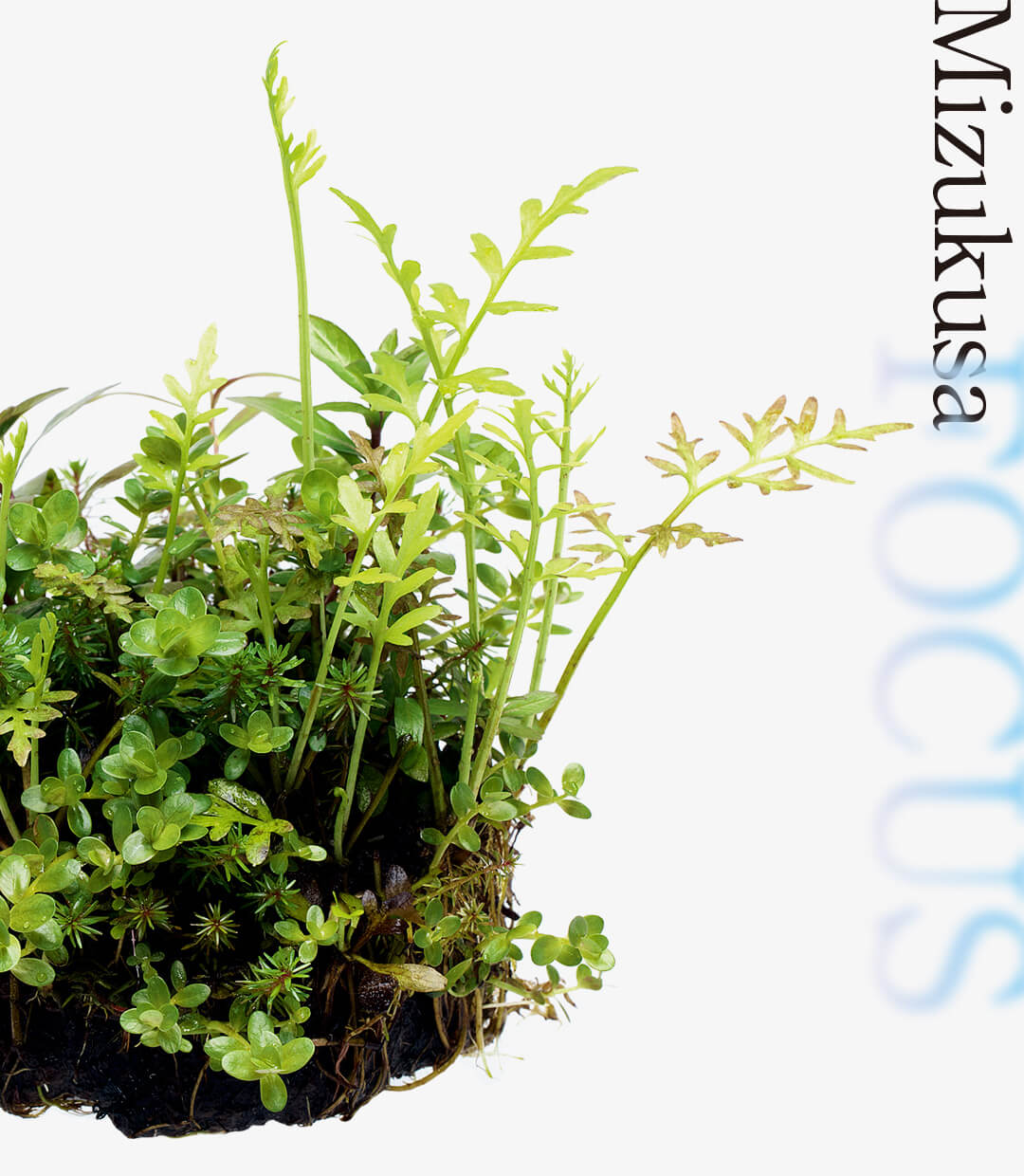NATURE IN THE GLASS ‘Musings on Mangroves’
The result of blending my mental landscape with a primordial mangrove forest motif, this aquascape’s driftwood layout composition is based on the tenacious roots of the trees inhabiting that land. Shade loving aquatic plants such as Microsolum flourish beneath Nymphaea lotus, which grows beautifully under intense amounts of light. I strived to create a scene in which aquatic plants with different light preferences, representing Yin and Yang, mutually cooperate to provide an environment for life.
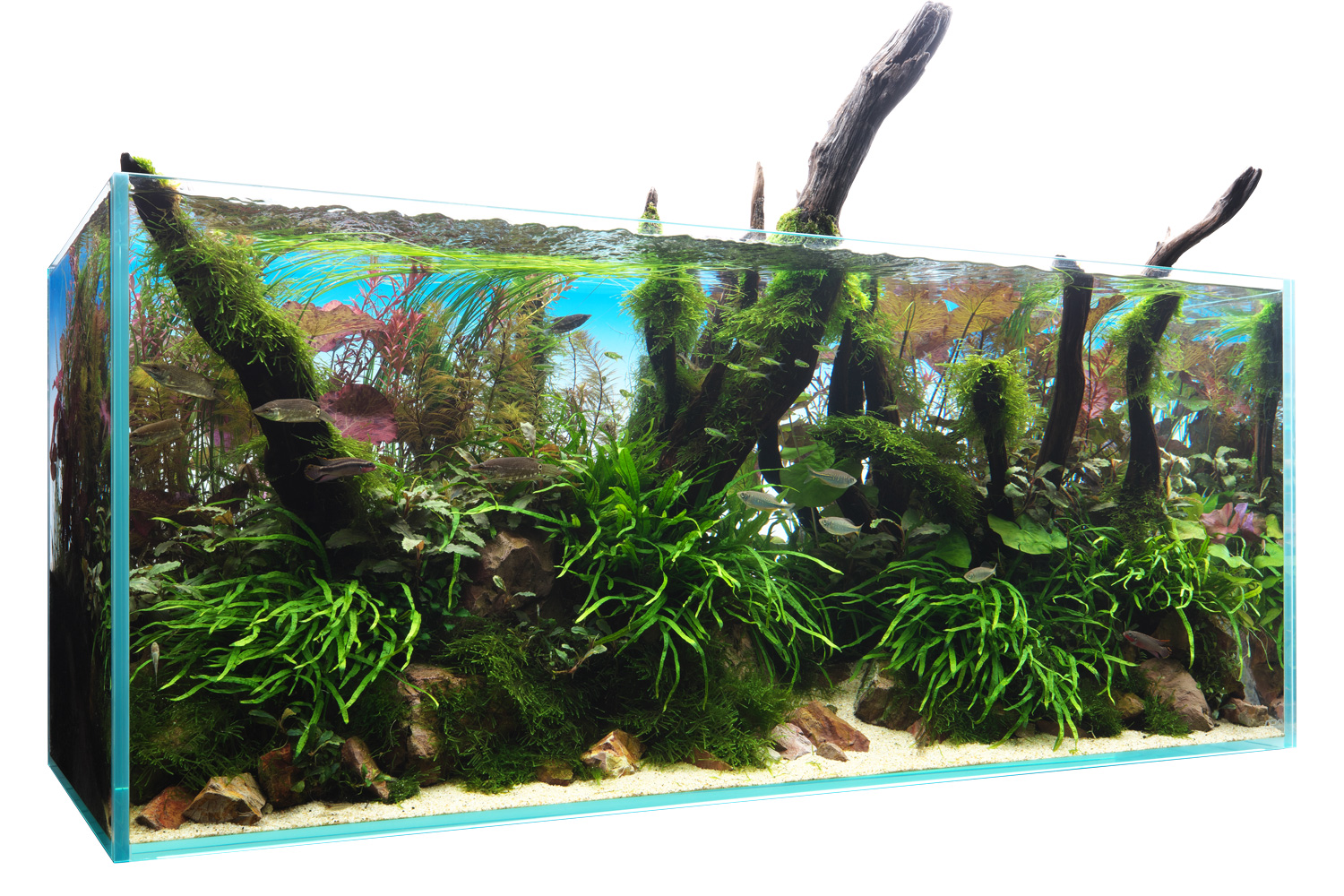
DATA
Photo taken on: March 28, 2023 (ADA)
Creator: Naru Uchida (layout production, text)
Aquarium: Cube Garden W1,200×D500×H500(mm)
Lighting: Solar RGB x 2 (8.5 hours per day)
Filtration: Super Jet Filter ES-1200 (Bio Rio G)
Material: Horn Wood, Kei Stone
Substrate: Aqua Soil – Amazonia Ver.2, Power Sand Advance M, Bacter 100, Clear Super, Tourmaline BC, Colorado Sand
CO2: Pollen Glass Beetle 40Ø, 5 bubbles per second via CO2 Beetle Counter (using Tower)
Aeration: 15.5 hours after the light is turned off using Lily Pipe P-6
Additives: Brighty K, Green Brighty Mineral, Green Brighty Iron, Green Brighty Nitrogen
Water change: 1/3 once a week
Water quality: Temperature 25°C, pH: 6.2, TH: 50 mg/L
Plant :
Nymphaea lotus ‘Red’ / Nymphaea sp. ‘Iquitos’ / Myriophyllum sp. / Rotala rotundifolia ‘Reddish’ / Rotala rotundifolia ‘Inle’ / Eriocaulon sp. ‘Social Feather Duster’ / Microsorum sp. ‘Narrow Leaf’ / Anubias sp. ‘Kirin mini’ / Bucephalandra sp. ‘Sintang’ / Bucephalandra sp. / Taxiphyllum barbieri
Fish:
Devario devario / Ctenops nobilis / Microdevario kubotai / Pelvicachromis taeniatus ‘Nigeria Red’ / Crossocheilus oblongus / Otocinclus sp. / Caridina multidentata
Photo taken on: March 28, 2023 (ADA)
Creator: Naru Uchida (layout production, text)
Aquarium: Cube Garden W1,200×D500×H500(mm)
Lighting: Solar RGB x 2 (8.5 hours per day)
Filtration: Super Jet Filter ES-1200 (Bio Rio G)
Material: Horn Wood, Kei Stone
Substrate: Aqua Soil – Amazonia Ver.2, Power Sand Advance M, Bacter 100, Clear Super, Tourmaline BC, Colorado Sand
CO2: Pollen Glass Beetle 40Ø, 5 bubbles per second via CO2 Beetle Counter (using Tower)
Aeration: 15.5 hours after the light is turned off using Lily Pipe P-6
Additives: Brighty K, Green Brighty Mineral, Green Brighty Iron, Green Brighty Nitrogen
Water change: 1/3 once a week
Water quality: Temperature 25°C, pH: 6.2, TH: 50 mg/L
Plant :
Nymphaea lotus ‘Red’ / Nymphaea sp. ‘Iquitos’ / Myriophyllum sp. / Rotala rotundifolia ‘Reddish’ / Rotala rotundifolia ‘Inle’ / Eriocaulon sp. ‘Social Feather Duster’ / Microsorum sp. ‘Narrow Leaf’ / Anubias sp. ‘Kirin mini’ / Bucephalandra sp. ‘Sintang’ / Bucephalandra sp. / Taxiphyllum barbieri
Fish:
Devario devario / Ctenops nobilis / Microdevario kubotai / Pelvicachromis taeniatus ‘Nigeria Red’ / Crossocheilus oblongus / Otocinclus sp. / Caridina multidentata
An aquascape as dedicated to the wellbeing of fish as it is to visual beauty
[Composition] Intentional vertical lines, an unwavering composition
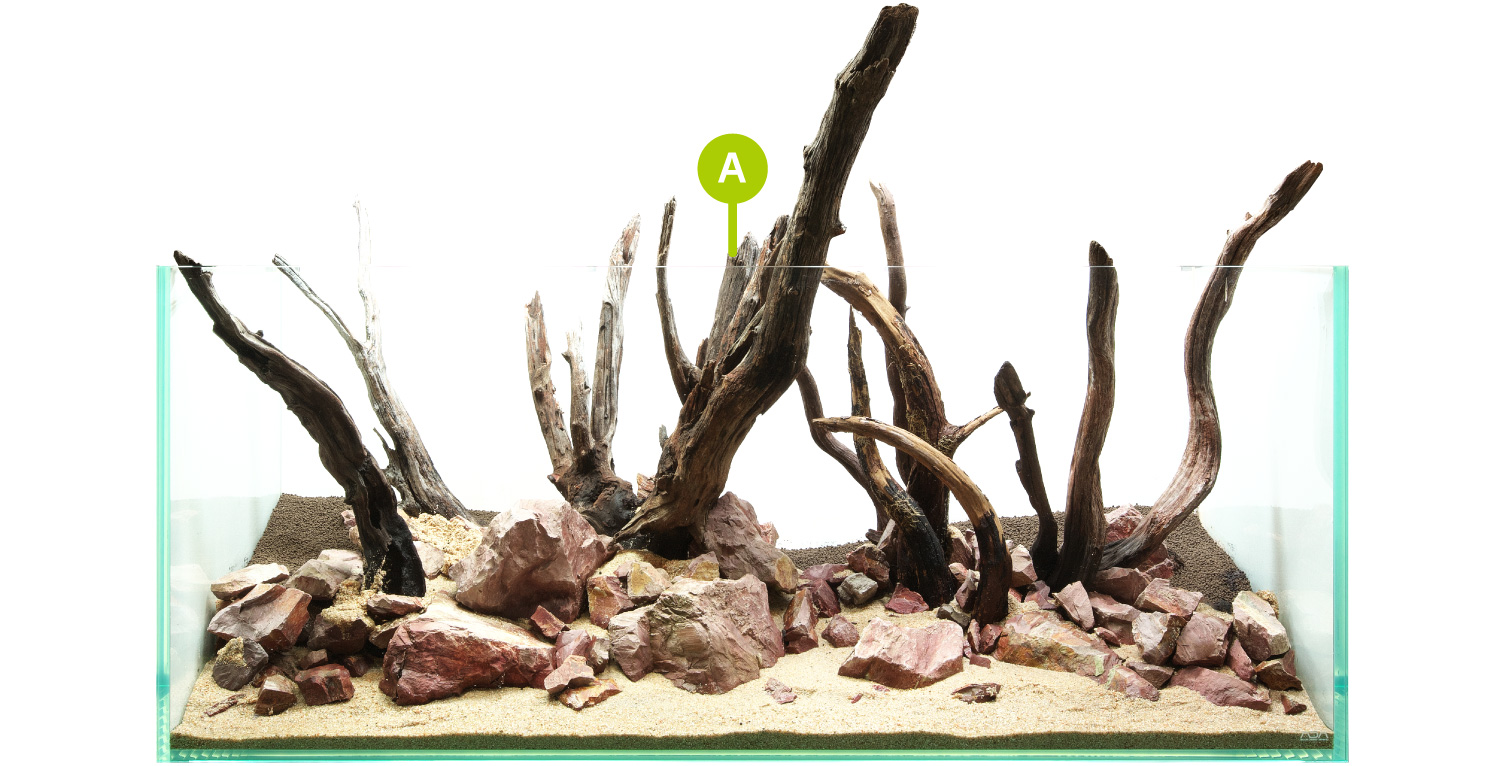
Gaps are carefully filled in with small stones to prevent soil disturbance. Detail where it is not visible is a mark of an aquascapes quality.
A. Stability in the compositions framework is an important element for maintenance
Stones of different sizes are used to fix the buoyant driftwood into place, deliberately in vertical lines to allow light to reach the water lilies.
Stones of different sizes are used to fix the buoyant driftwood into place, deliberately in vertical lines to allow light to reach the water lilies.
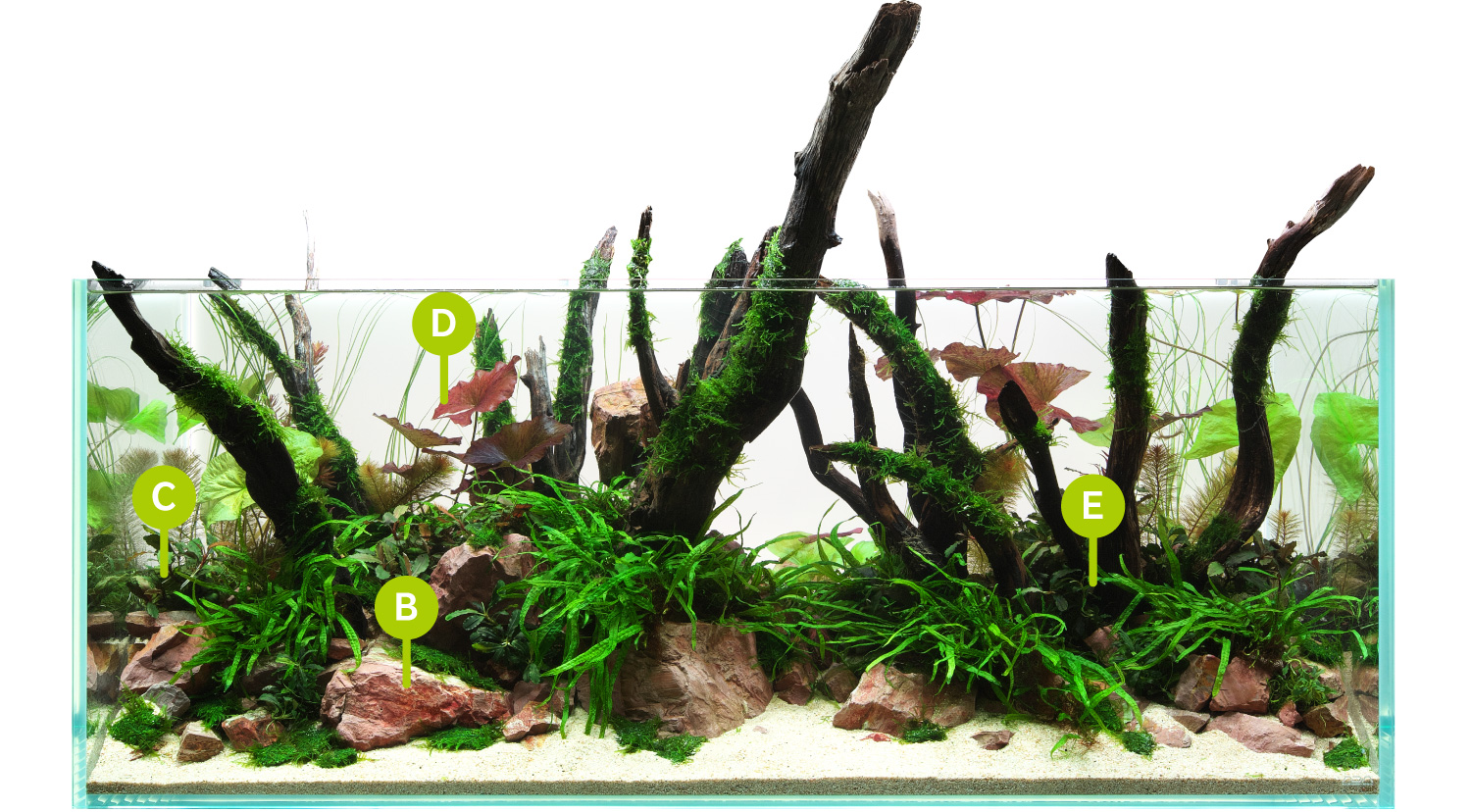
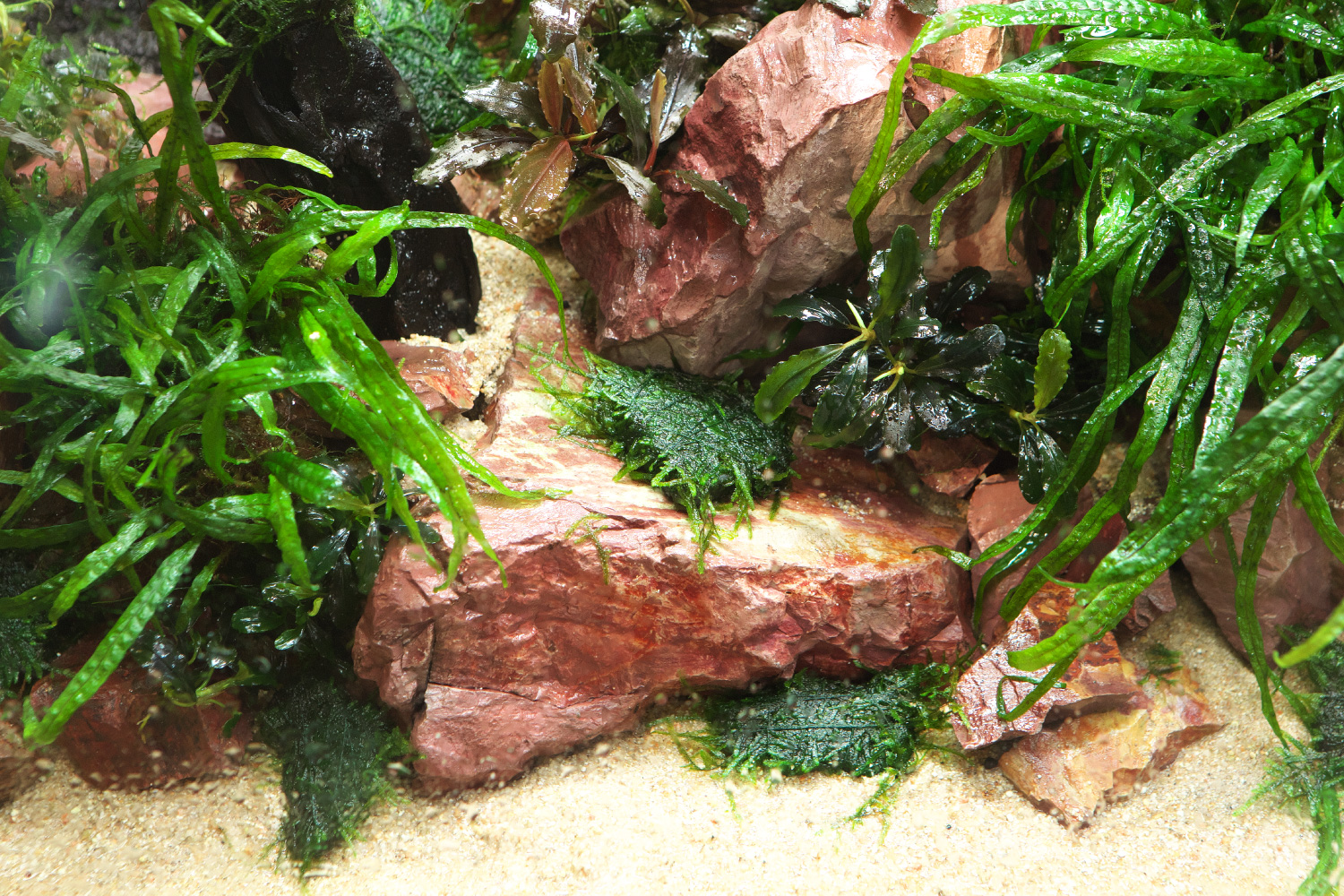
B. Brightening the aquascape using ADA materials
Combining Colorado Sand with the pale orange tones of Kei Stone for a harmonious high-tone finish. Moss covered rocks placed between the sand and Kei Stone weakens artificiality, giving a more natural impression.
Combining Colorado Sand with the pale orange tones of Kei Stone for a harmonious high-tone finish. Moss covered rocks placed between the sand and Kei Stone weakens artificiality, giving a more natural impression.
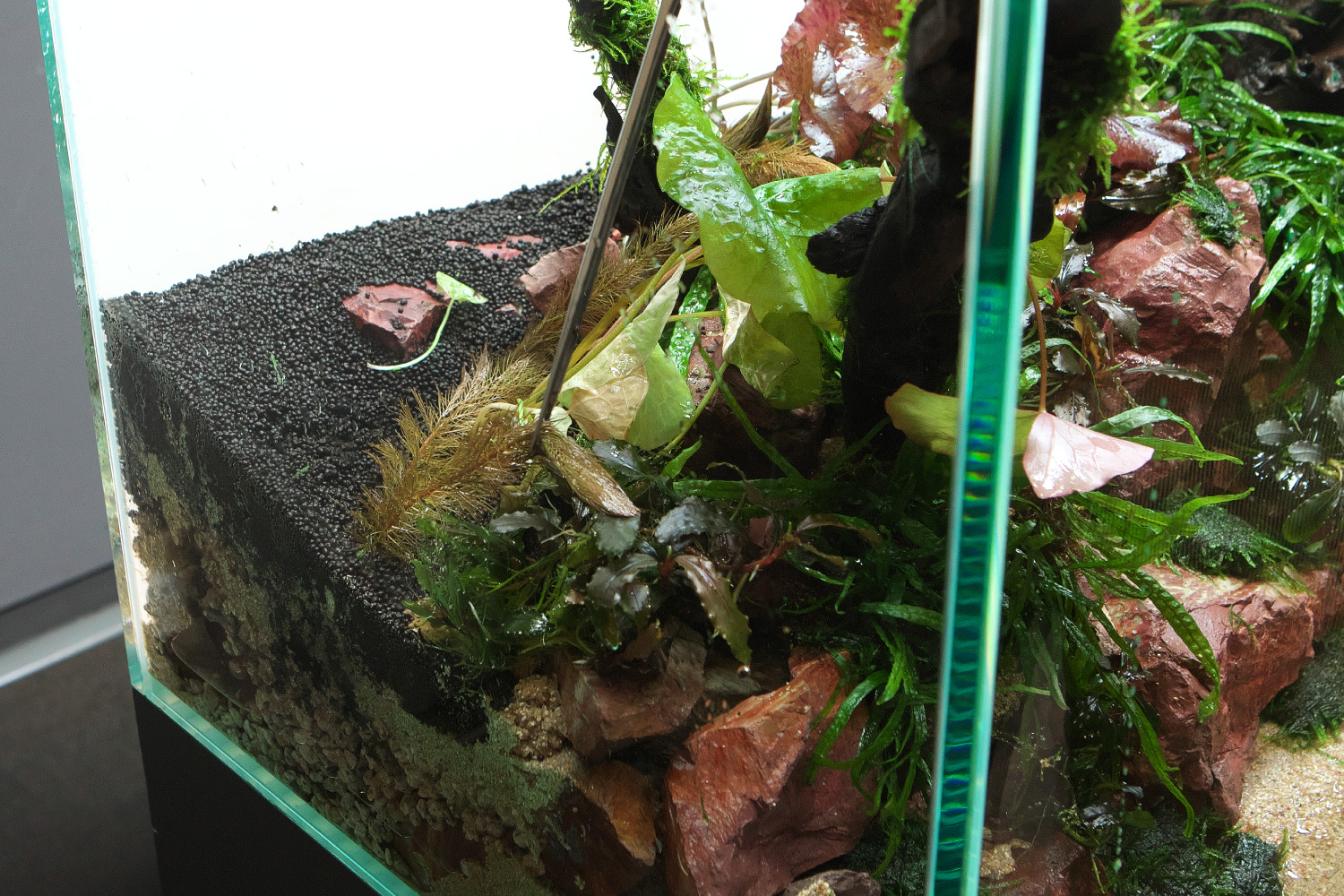
C. Adjusting the Power Sand to soil ratio when making the substrate
So that the sandy area does not lose its beauty over time, take care that the substrate is not at such a pitch that soil can run off. Power Sand is designed to support the growth of healthy roots in aquatic plants like water lilies and Eriocaulon sp. ‘Social Feather Duster’ , it should be laid thickly to also ensure enough permeability within the substrate.
So that the sandy area does not lose its beauty over time, take care that the substrate is not at such a pitch that soil can run off. Power Sand is designed to support the growth of healthy roots in aquatic plants like water lilies and Eriocaulon sp. ‘Social Feather Duster’ , it should be laid thickly to also ensure enough permeability within the substrate.
[Planting] A beautiful and more natural sense of unity
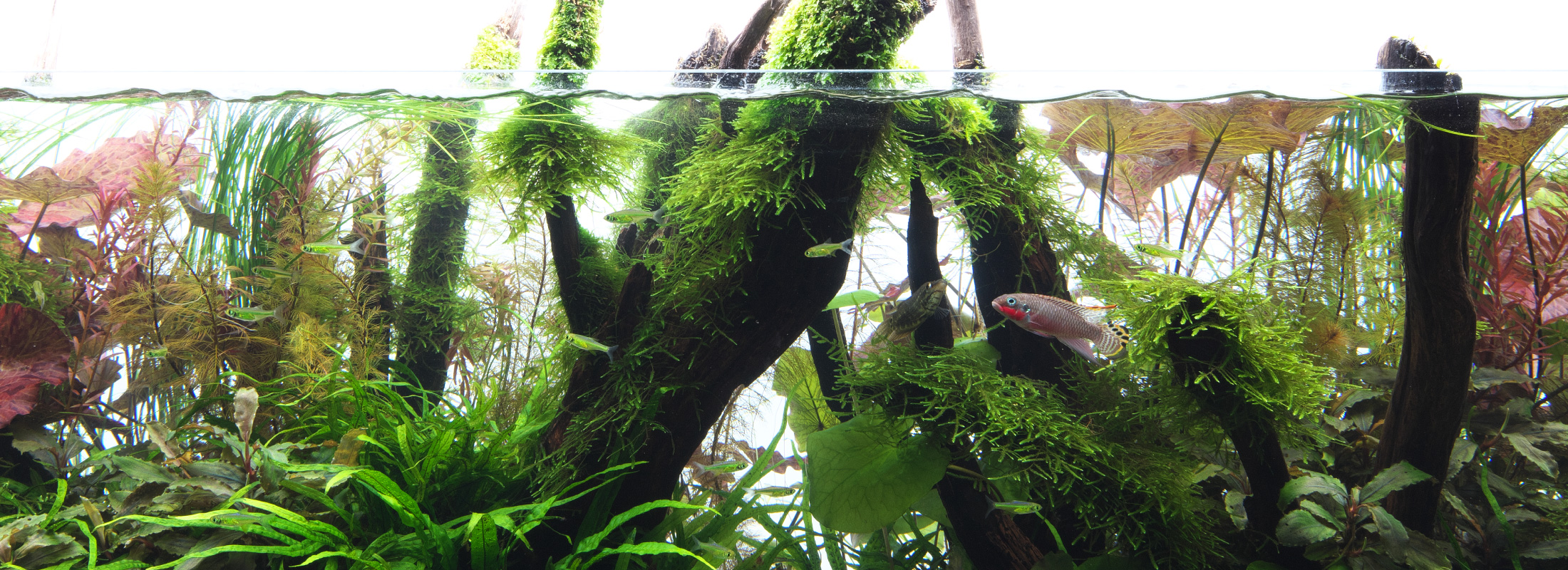
Wrapping driftwood and stones in moss is often done in aquatic plant layouts to stage a natural feeling. Here it is seen in combination with epythitic aquatic plants, such as ferns, and gives a sense of unity to the aquascape as well as moderately softening the impression of the composition materials.
[Completion]
The fish grow healthily, showing off their colors, perhaps because the amount of shade provided by the scenery is just right. Is the creation of an aquascape as dedicated to the wellbeing of fish as it is to visual beauty not the fundamental attraction of a Nature Aquarium?
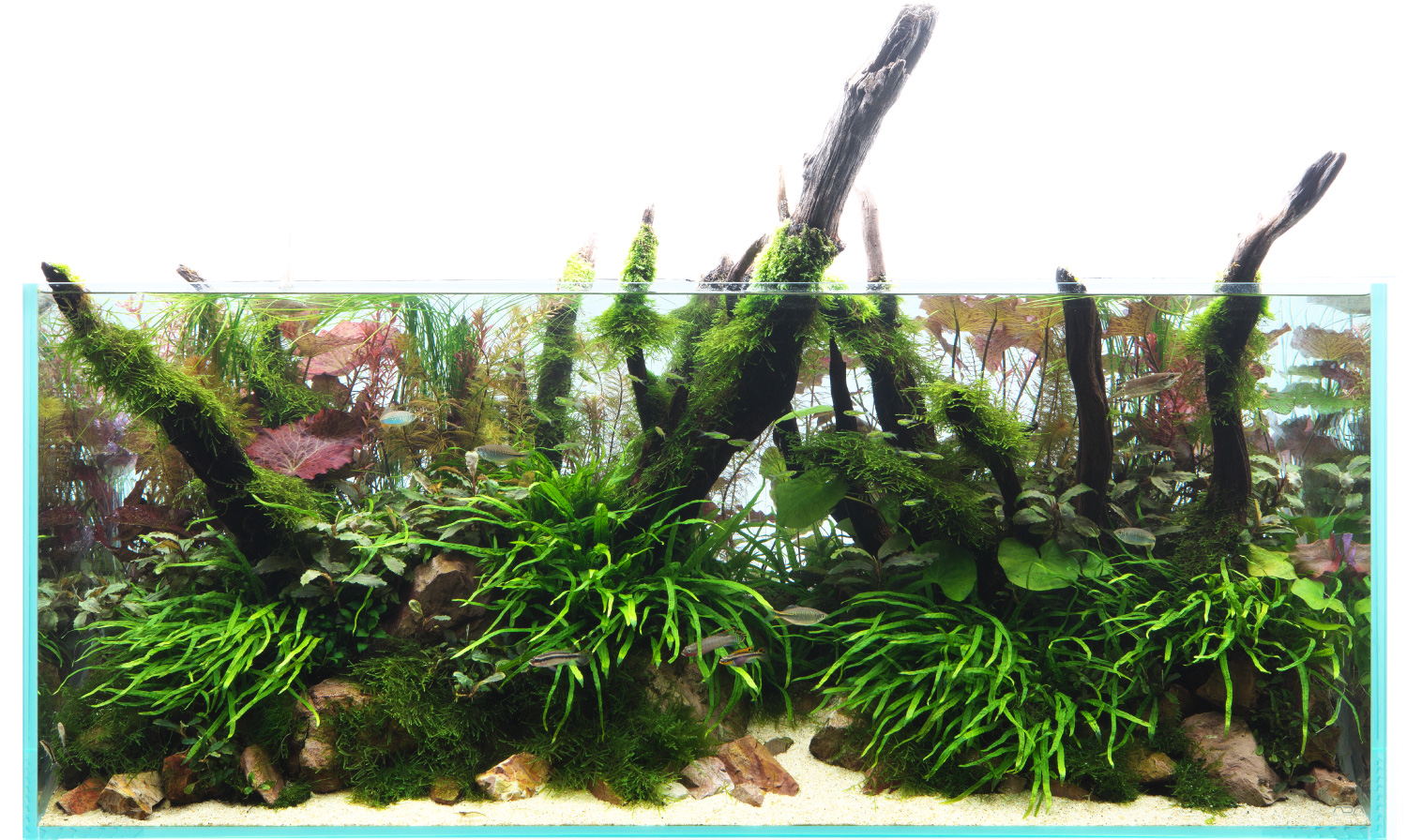
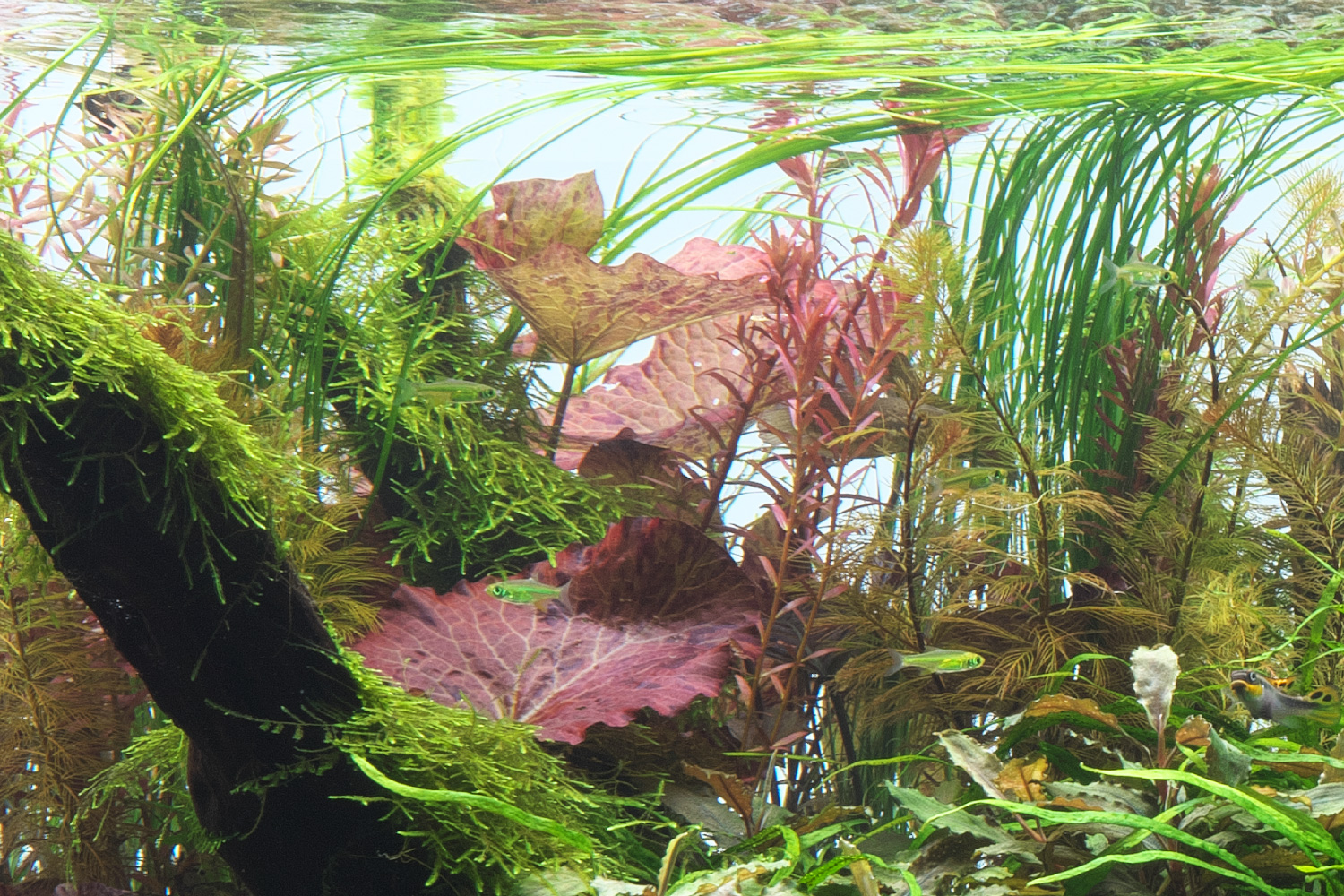
D. Planting that compliments the main plants
To allow the water lilies to develop, a wide planting area is set up from midground to background to ensure that light reaches their bases. Keeping planting density low, Eriocaulon sp. ‘Social Feather Duster’ , which is easy to manage when in a mix with other species, and stemmed plants,which can be easily put in and pulled out, have been chosen for the surrounding plants.
To allow the water lilies to develop, a wide planting area is set up from midground to background to ensure that light reaches their bases. Keeping planting density low, Eriocaulon sp. ‘Social Feather Duster’ , which is easy to manage when in a mix with other species, and stemmed plants,which can be easily put in and pulled out, have been chosen for the surrounding plants.
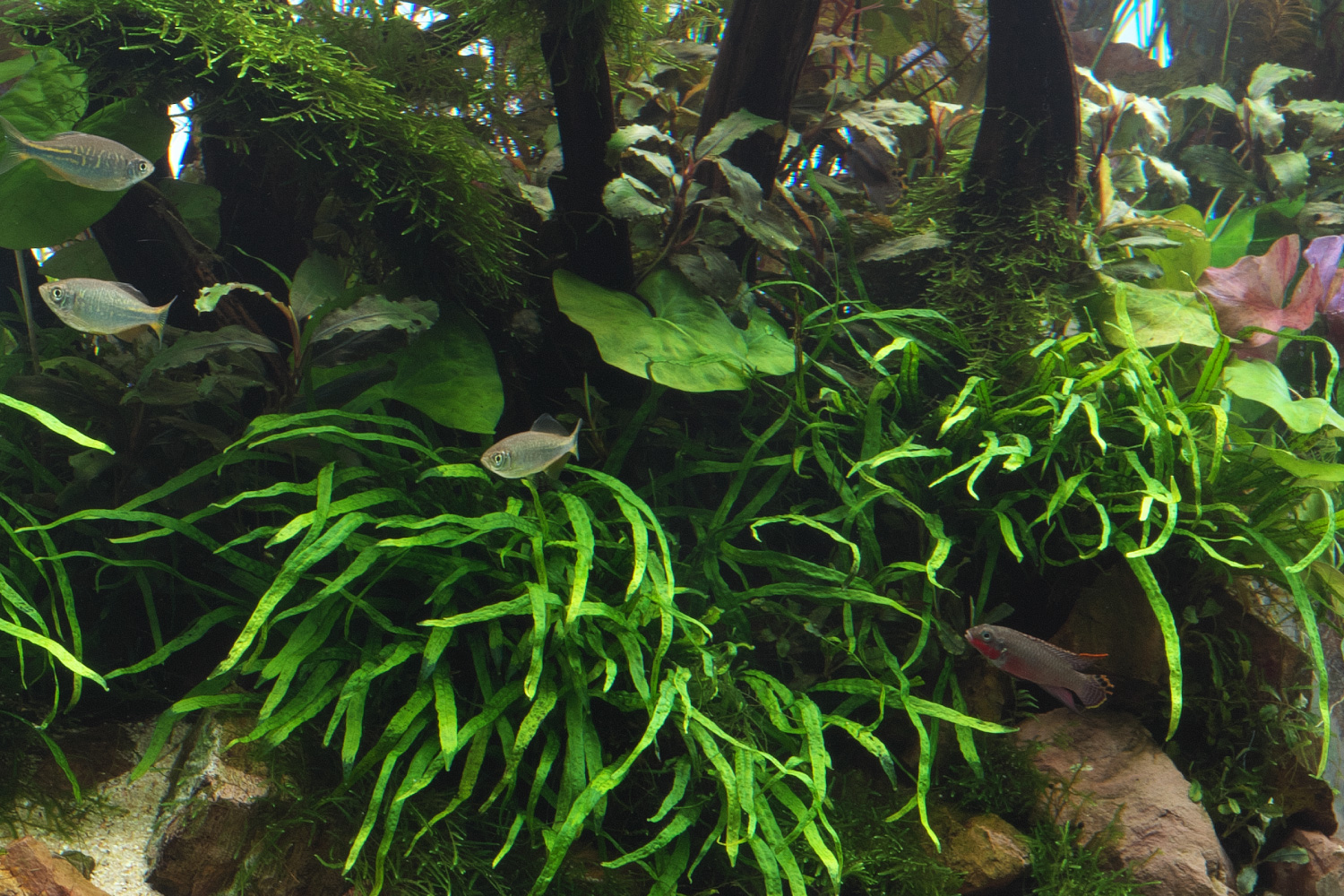
E. Fern distribution that determines the substrata’s impression
Arranging ferns to determine the substrata’s impression. In order not to spoil the concept of the composition and the view of the unfolding lily leaves, the fern’s range has been limited to the lower to middle level. So as not to look dull, various sizes of Microsolum are planted and Bucephalandra is dotted around to create contrast.
Arranging ferns to determine the substrata’s impression. In order not to spoil the concept of the composition and the view of the unfolding lily leaves, the fern’s range has been limited to the lower to middle level. So as not to look dull, various sizes of Microsolum are planted and Bucephalandra is dotted around to create contrast.
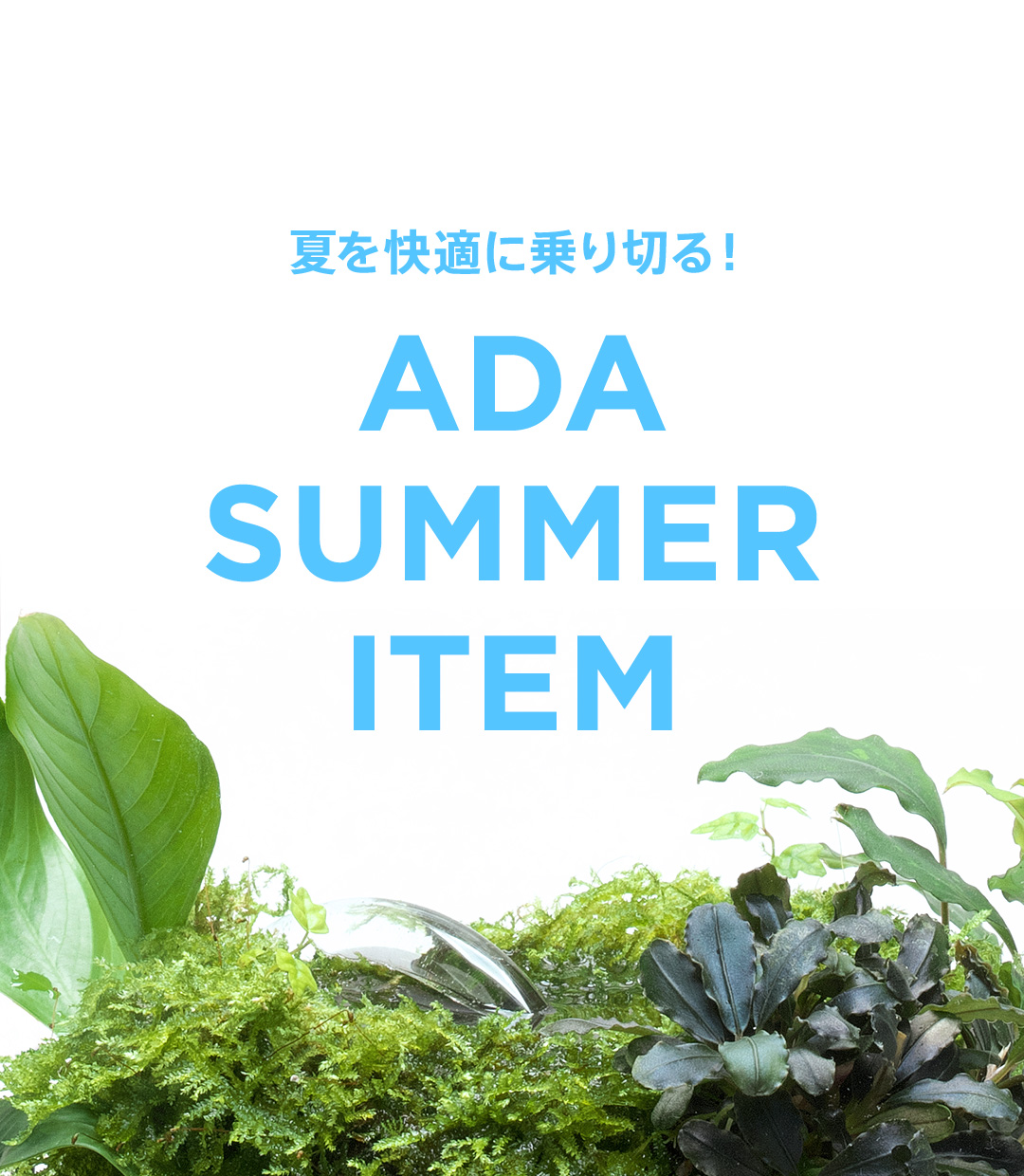
![Green Lab. #02 [ Karst Climber ]](https://www.adana.co.jp/wp-content/uploads/sites/3/2025/07/gl02_img_ogp.jpg)
